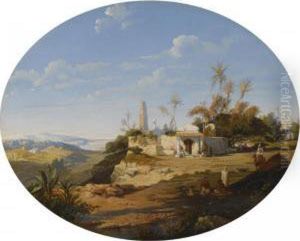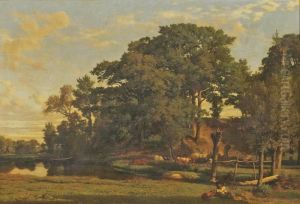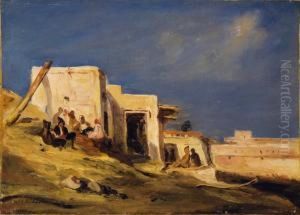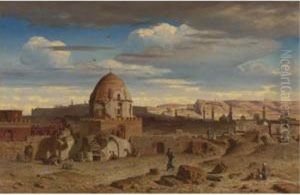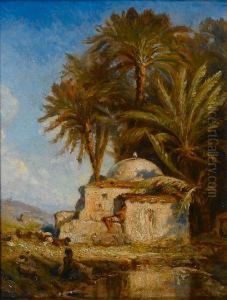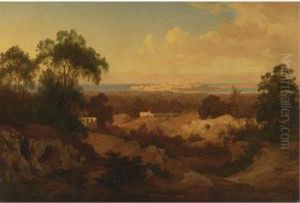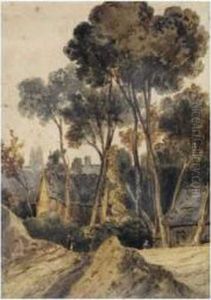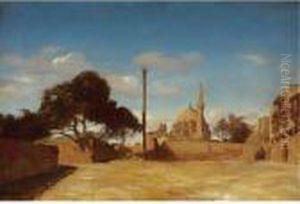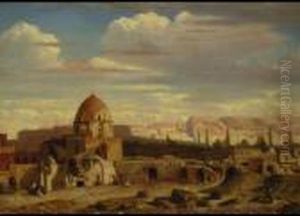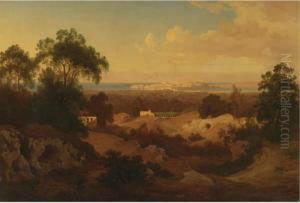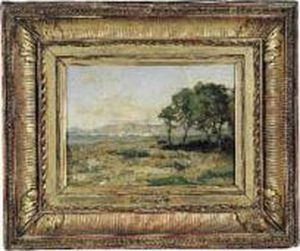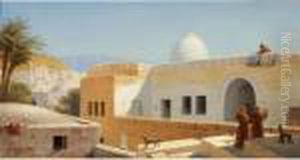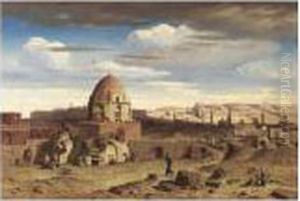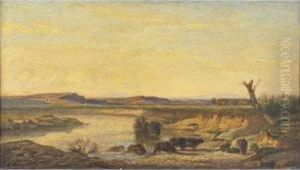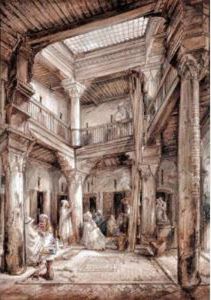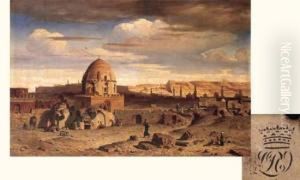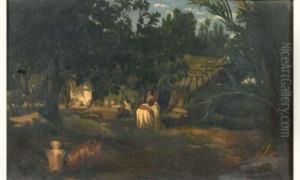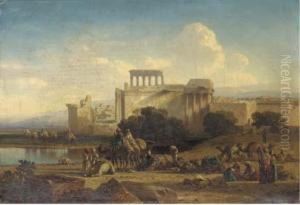Prosper Georges Ant. Marilhat Paintings
Prosper Georges Antoine Marilhat was a French landscape painter born on March 26, 1811, in Vertaizon, a small town in the Puy-de-Dôme department. He is best known for his Orientalist works, which reflect the influence of his travels in the Middle East, particularly Egypt.
Marilhat showed an early talent for art and was initially apprenticed to a house painter. His skills were soon recognized, and he began formal artistic training under the landscape painter Camille Roqueplan. Marilhat's first public exposure came in 1829 when he exhibited at the Paris Salon, the official art exhibition of the Académie des Beaux-Arts in Paris.
The turning point in Marilhat's career came in 1831 when he joined a diplomatic mission to the Middle East led by Charles-Marie de La Condamine. During this trip, he visited Greece, Syria, and Egypt, where he was deeply inspired by the exotic landscapes and vibrant culture. Marilhat spent nearly two years in Egypt, and the sketches and paintings he created during this time would become the basis for many of his later works.
Upon his return to France, Marilhat became associated with the Orientalist movement, which was characterized by European artists' fascination with the peoples, cultures, and landscapes of the Middle East and North Africa. His paintings from this period are noted for their meticulous detail, atmospheric effects, and the use of light to create mood.
Despite his success, Marilhat's life was marred by personal difficulties. He struggled with financial problems and suffered from bouts of mental illness, which eventually led to his premature death on September 12, 1847, in Paris. Unfortunately, his career was cut short, and he did not live to see the full impact of his work, which would continue to be appreciated posthumously for its contribution to the Orientalist genre.
Today, Marilhat's works are held in several prestigious institutions, including the Louvre in Paris and the Hermitage Museum in Saint Petersburg. His paintings remain a testament to the allure of the Orient as seen through the eyes of a 19th-century European artist and continue to be studied for their unique blend of realism and romanticism.
